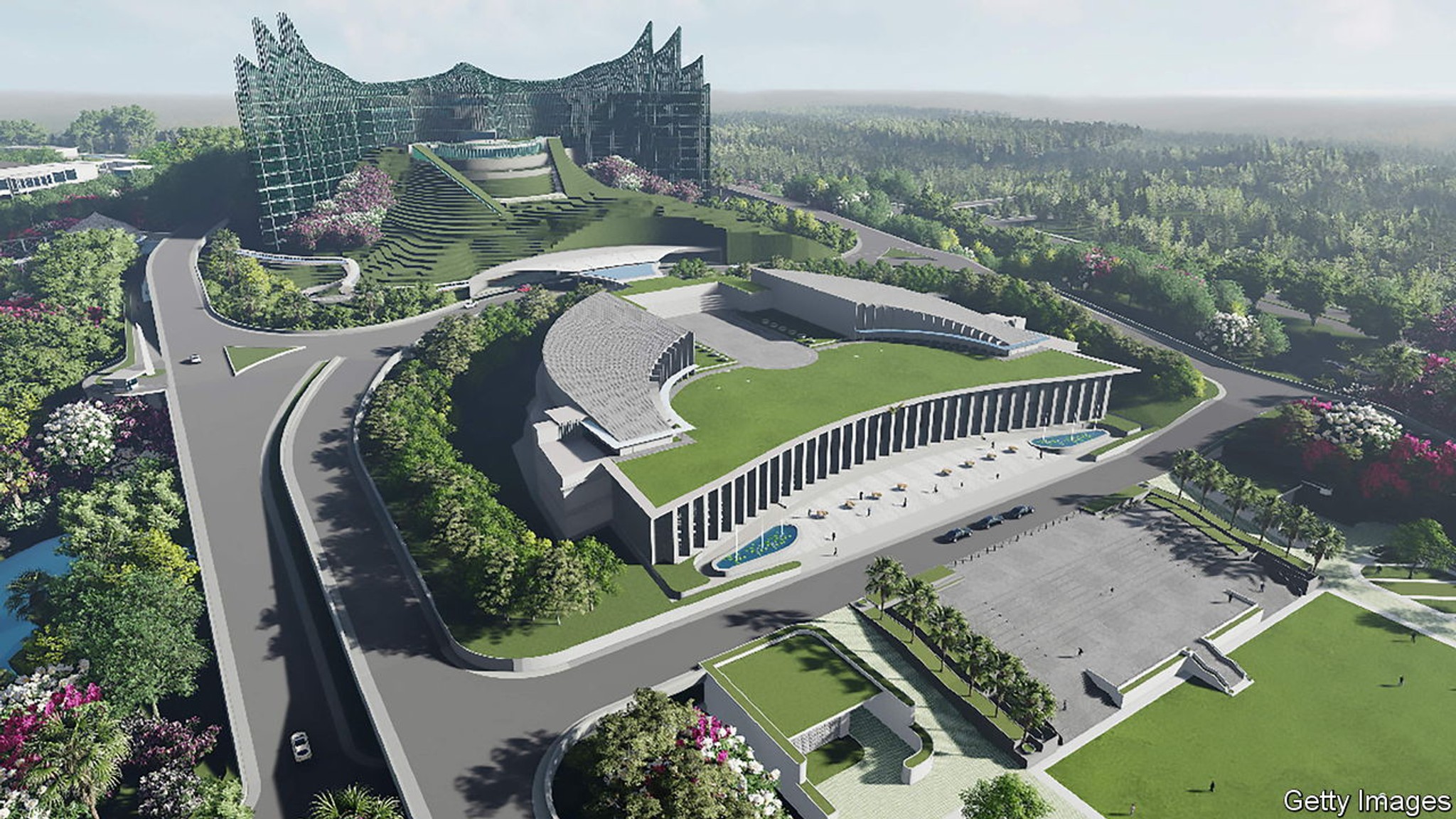•Reasons vary, from the practical to the symbolic—but few moves are successful
By The Economist
On january 18th Indonesia announced that its new capital city will be named Nusantara (“archipelago” in Javanese). The country’s president, Joko Widodo, dismissed 80 other options before deciding on Nusantara. The project, estimated to cost $32bn, will sit on 180,000 hectares of what is now jungle on the island of Borneo. Egypt has ambitions to build a grand new capital, too. In December the government held its first cabinet meeting in the as-yet-unnamed new administrative capital, a city being built some 49km east of Cairo. Why do countries change their capital cities?
Historically rulers have used new capitals to unite different areas. Legend holds that King Menes merged upper and lower Egypt into one kingdom in 3150 BC, and placed Memphis at its centre. President George Washington handpicked the location of Washington, DC in 1790 as a bridge between the northern and southern states—though it was a bastion of the Union during the Civil War. And Australia chose Canberra as its capital at the start of the 20th century in part because of its rough equidistance between Melbourne and Sydney.
A move does not guarantee unity, however. In 1991 Nigeria moved its capital from Lagos, on the south coast, to Abuja, in the middle of the country. Lagos was historically dominated by the Christian Yoruba, and Abuja was suposed to be a buffer zone between the Christian south and the Muslim north. But the Hausa, the largest Islamic tribe, has benefited most from the move to Abuja. That many of the public buildings in Abuja employ Islamic imagery further rankles Christians. And the indigenous Gwari people, driven off their land to make way for the city, still protest.
Not all moves are well-intentioned. Some leaders want to build a stronghold far from their unhappy subjects. Myanmar’s capital, Naypyidaw, is a military vanity project, built in 2004 to secure the junta’s seat of power. In 2017 President Teodoro Obiang of Equatorial Guinea, Africa’s longest serving dictator, moved the capital from Malabo to Oyala. Having come to power by way of a coup, the president was keen to house himself in a secure place—away from rebels, critics and activists.
Indonesia’s president claims to have more noble aims. He promises a zero-emissions paradise and says the move will redistribute wealth, which is heavily concentrated in western urban areas. Critics counter that much of the land the government is buying up is already owned by wealthy individuals and companies, including mining and logging operations. Brazil tried to do something similar with Brasilia, which replaced Rio de Janeiro as the capital in 1960. The new city was supposed to create an egalitarian society without informal workers or lawless favelas, and to bring some of the wealth of the south-east to the country’s poor interior. Instead, the demographics of the city grew to mirror the rest of Brazil. Today it is one of the most unequal cities in the world.
The most compelling reason to move is also the most prosaic: there are often limits to the growth of cities. Jakarta is traffic-clogged, overcrowded and flood-prone—not to mention one of the fastest-sinking cities in the world. Moving the capital, and with it the government, civil service and possibly big employers, should alleviate the pressure. But establishing a new capital takes time. After its founding in 1790, Washington was for a long time mocked as a city plan without a city. Even today, it has plenty of detractors.
Credits | The Economist

